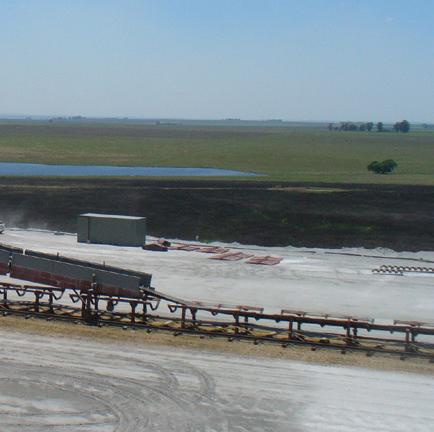
3 minute read
Preventing coal ash from reaching dumpsites
PREVENTING COAL ASH FROM
REACHING DUMPSITES
Coal ash from power stations and steam generators continues to accumulate across the country, prompting a call from the SA Coal Ash Association (SACAA) to private and public sectors to explore ways of incorporating coal ash into their everyday supply chains.



SACAA director Belinda Heichler says there are a myriad of uses for the coal ash that range from cementblending, cementless concrete production, brick-making and road stabilisation to plastic additives, agricultural uses and neutralising acid mine drainage. SACAA would like to assist in creating awareness of the benefits of coal ash in these applications.
“These companies are doing an enormous service to the country. They’ve tapped into a resource that has excess supply, is highly versatile and is freely available to users, provided they can provide transport from the point-of-use of the coal. This means that even if the resource needs to be hauled further than traditional supplies, it has a minimal cost attached and should provide a cost benefit to the user,” says Heichler.
Facilitating role
She adds that Eskom recently awarded contracts to new offtakers and it is envisaged that this will fuel a surge of interest among these companies’ peers. These new entrants to the market will need to be supported and guided by SACAA and its existing members.
Rather than being left to figure it out on their own, the 30-year-old association has a treasure chest full of resources and skills to assist new and existing entrants to identify markets, facilitate technical challenges and act as an interface between Eskom, offtakers, legislators and other interested parties for the benefit of the industry.
Heichler says that right now, the association has an important role to play, particularly in promoting the use of coal ash more widely and to a more diverse audience than before. It is also needed to help promote transparency between the coal ash producers in the country and commercial offtakers of fly ash and other existing and new users of other streams of ash.
Act now
“The sad reality is that our country’s running out of space to dump the millions of tons of coal ash that are produced annually and it’s imperative that we support all attempts to take useable ash out of the waste stream at its source. It’s also worth noting that the requirement for fly ash has grown over the past 30 years, but the number of offtakers hasn’t,” she says.
Coarse/Bottom coal ash also needs to be marketed as a greener aggregate for precast concrete and road stabilisation. In addition, coal ash should be used in our fight to limit acid mine drainage damage to our environments.
“There are too many other uses to discuss here, but in a depressed economy, it’s safe to say that SACAA will do everything in its ability to help individuals, companies and government departments unpack the characteristics of different types and grades of coal ash and to assist in the use and commercialisation of products derived from this valuable material,” adds Heichler.
Reaching out
SACAA will continue raising awareness and providing education through ongoing efforts in the media, webinars, on social media platforms and other industry channels. To find out more, contact the offices on tel: 011 791 3327 or visit: www. coalash.co.za.

(Left): Eskom uses both wet and dry ashing on its coal dumps and stockpiles.
(Above): It is imperative to identify ash resources in their original state before they are sent to dump.










